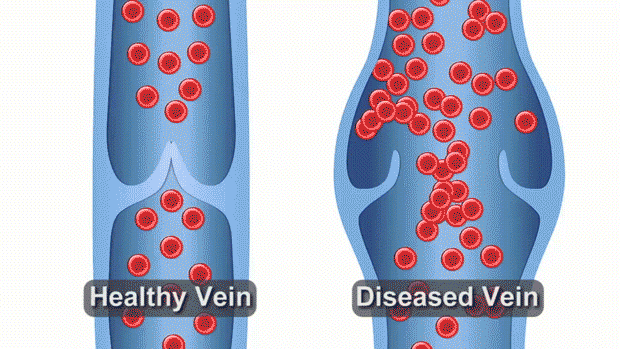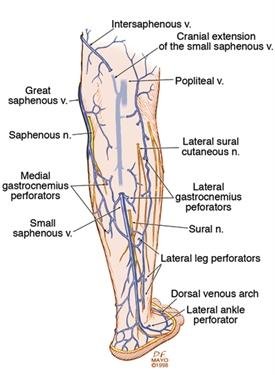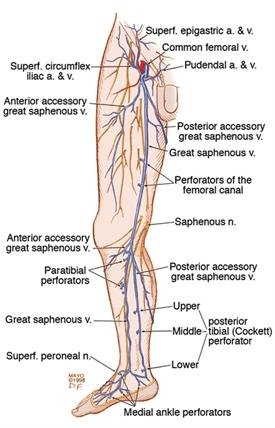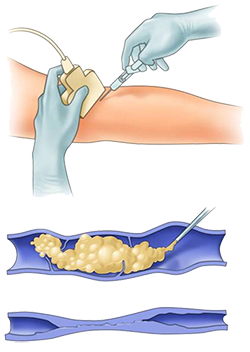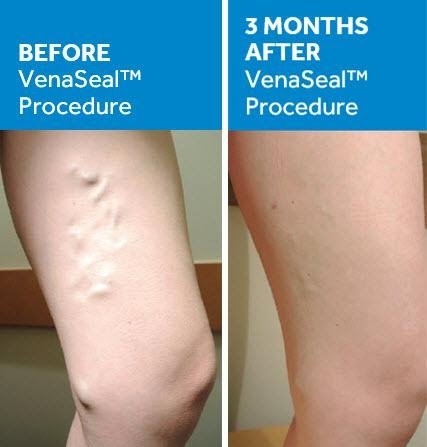Venous Clinic
We treat varicose veins, reticular veins and spider veins.
What are varicose veins?
Varicose veins are large dark-colored veins, visible below the surface of the skin resulting from a chronic increase in pressure within the vein. They are the result of underlying venous disease and a sign of venous insufficiency. Venous insufficiencies range from mild forms that may be largely cosmetic and cause slight discomfort, to more severe forms that can cause swelling, itching, skin changes, venous ulcers or more serious health concerns.
What are the symptoms of varicose veins?
Bulging or stretching of superficial leg veins
Aching or throbbing, leg cramps.
Heaviness, fatigue, skin itching or restless legs
Skin changes or breakdown with ulceration.
If left untreated, venous insufficiency caused by varicose veins can lead to swelling, dark discoloration of the skin, and ulcers on the legs.
What causes varicose veins?
In normal veins, blood flows to the heart, and valves prevent the blood from flowing backward. With varicose veins, the valves do not closel fully and allow blood to leak downward. Blood pools in the vein, increasing venous pressure and weakening the vein wall. The result is leg swelling, venous distension, skin changes, poor circulation, nail changes, discoloration and ulceration, typical of this condition.
Many factors, such as age, gender, family history, overweight, multiple pregnancies, prolonged standing and lifestyle can contribute to the development of venous disorders and varicose veins. Heart diseases and liver diseases can contribute as well.
Can I prevent varicose veins?
Yes, addressing above risk factors will decrease the chance of developing varicose veins.
Treatment for this condition:
Conservative Management: with weight loss, leg elevation compression stockings and walking.
Ultrasound Guided Sclerotherapy with Foam
VenaSeal
Radiofrequency ablation
Ultrasound Guided Sclerotherapy with Foam
In this therapy, a foam sclerosant somewhat resembling shaving cream, is injected into the vein. It displaces the blood and stays inside the lining of the vessel. It is very effective for closing small to medium sized varicose veins, or reticular veins.
Bulging, unsightly and discolored veins are treated within seconds of the injection, and typically close permanently with foam sclerotherapy. These veins are absorbed by the body and will disappear over time. A compression bandage or stocking is placed directly after treatment to ensure optimal results. Compression stockings are advised to be worn for at least two weeks following treatment.
Advantages of Sclerotherapy:
Quick relief from symptoms
No downtime with minimal risk of side effects, completely outpatient.
Minimally invasive with no scarring
Long-lasting results
VenaSeal™ procedure.
The VenaSeal™ system delivers a small amount of a specially formulated medical adhesive intended to seal or close the diseased vein in which blood is refluxing and pooling in the lower legs. The return of blood is thus rerouted via nearby healthy veins, and this ‘decongestion’ provides symptom relief.
A more comfortable experience.
Simple, outpatient procedure
No tumescent anesthesia
Less pain and bruising than thermal ablation
Faster recovery time than thermal ablation
Compression stockings not needed after the procedure
What are spider veins?
Spider veins (also known as spider telangiectasias) appear as thin veins visible below the surface of the skin. As their name suggests, they usually appear in a pattern similar to a spider web or tree branches. They are most common on the face and legs and can be red or blue in color. Spider veins are much smaller than varicose veins, being <1mm, and do not appear enlarged or “knotted” as with the more serious venous disorders.
Spider veins are not usually a serious health concern, but cosmetically, their appearance is a concern for many patients. They can be an indication of a more serious venous problem and a thorough evaluation by a medical professional is advised. They can be easily treated with sclerotherapy injection.
Reticular veins are slightly larger veins than spider veins.
Treatment for this condition includes:
Sclerotherapy
Laser treatment
Free Vein Screening
We are pleased to offer free vein screenings to help people figure out if veins are the cause of their symptoms. There are three main reasons for someone to have a free vein screening:
If you have symptoms in legs or bulging veins in your legs and are wondering what is the underlying problem.
If you are unsure if your veins are considered varicose veins or spider veins and want to improve cosmetic appearance.
If you are exploring whether there are any treatment options for your condition.
Free vein screenings are educational opportunities and a review of options. They can be important in discovering other medical conditions causing varicose veins, such as valve diseases of the heart.

